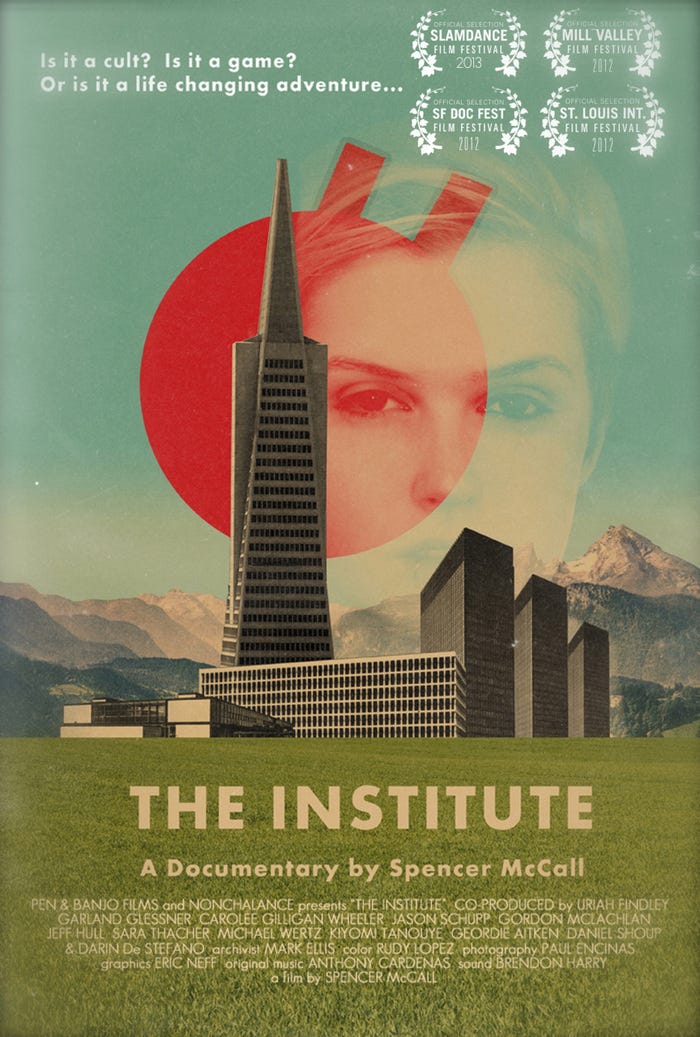I regret I never experienced the Jejune Institute. From 2008 to 2011, word of mouth, strange Scientology-like fliers posted on the street, and even a Bold Italic article, led people from all walks of life on a weird and wild goose chase in San Francisco. It all began inside an office — Jejune HQ — in the Financial District, but participants were led to explore nooks and crannies of the city (and later, parts of the East Bay) at the behest of Jejune founder Octavio Coleman Esq, a suave old man who looks good in turtlenecks and who is probably more interesting than the Dos Equis man. Participants found that the story unfolded and got more complicated, too: It involved a young punk girl named Eva who disappeared in the ’80s, pseudo-scientific hippie shit, mysterious radio broadcasts by anti-Jejune Institute organizations, and a dancing b-boy and sasquatch.

Friends who had experienced Jejune described it in different vague, but intriguing ways. “It’s a cult!” “You’re not sure if it’s real or a joke, but it was creepy.” “It’s like a scavenger hunt, but it gets weird.” No one could really tell me what exactly they had participated in, but everyone who tried it couldn’t stop talking about how cool it was. In 2011, when the Jejune Institute closed, it was revealed that the whole thing was actually a complicated, immersive, three-year art project created by Oakland artist Jeff Hull. But even this revelation didn’t completely answer the questions of what Jejune Institute was all about.

Spencer McCall’s film The Institute seems like it should provide answers to those questions. His 90-minute “documentary” tells the alternate reality game’s (ARG) backstory through interviews with participants and Hull himself. But it turns out that the film might as well be another chapter of the defunct game. After watching the film at a press screening last week, I left the Roxie feeling a little wonky, a little duped, and at the same time, like McCall had given me a wink and a handshake when no one else was looking. I talked to McCall – who lives in the Richmond District and works at a web company and teaches motion graphics at SF State — on the phone to see if I could get a few more answers out of him.
I read in an interview that you were influenced by Exit Through the Gift Shop, in terms of blurring the lines between fiction and reality. Can you tell me more about why you wanted to tell the story of the Jejune Institute in this way?
I love the idea of taking the thriller-mystery genre and applying it to a concept that is not well-defined.
I watched a lot of movies that were based on video games because I wanted to see if there were any interesting ways that game play could be interpreted as, and as interactive as, a two-dimensional medium like a movie. The whole point of [the Jejune Institute] was to get people off their butt to explore the city, so I wanted to turn the film into a problem solving exercise.

How do you describe what the Jejune Institute was to your friends?
When friends would ask what I was making my movie about, I could tell them it was about a game that people participated in, but that didn’t sound interesting. So my elevator pitch was “In 1988, this girl went missing, her case was never solved. Twenty years later, cryptic posters started coming up on the 20th anniversary of her disappearance. When people started following the clues, they went down this rabbit hole into this insane world of new religious groups, cult factions battling each other.” At this point, people would either be interested or it would just go over their head.
Why do you think Jeff ran the Jejune Institute out of San Francisco and not Oakland?
San Francisco is more internationally known. It was ground zero in the ’70s for new religious movements, like Jonestown. Since the subject matter was about pop-psychology and new religious movements, it made sense for it to be based in SF. It gave it creedence that the organization might’ve existed in San Francisco for the past 30 to 40 years. San Francisco is also so dense, especially the Financial District, that it presented lots of opportunities to hide little gems and clues. It’s easy to walk around and believe you’ve walked a lot further than you did. And then you can hop on the train and get over to the Mission.

San Francisco has changed a bit since 2008/2009. Do you think the Jejune Institute would be as successful if it was around now?
[The Jejune Institute was about] trying to get people out and experiencing unique idiosyncrasies — I don‘t know if that’s changed. There are a lot more business savvy people and tech people in the Bay Area, and it seems like there’s less accessible culture and art on the surface that’s happening in SF versus three years ago, but I think that creates more of a desire for certain people to experience something outside the norm. In some ways I think the city is begging for more things like this. There might have even been an oversaturation in 2008.
We’ll find out more in three months.
What do you mean by that? Can you tell me more.
I can’t say any more than that. You’ll just have to find out.

Intrigued? The Institute opens on Oct 4 in the Bay Area, and will play at the Roxie, New Parkway in Oakland, and Smith Rafael Film Center in San Rafael. You can also catch it next week at the 5th Annual Oakland Underground Film Festival, taking place on Sept 25–29.
And keep your ears to the ground for the next iteration of the Jejune Institute. This time, I will not miss it.
All images courtesy of Argot Pictures







